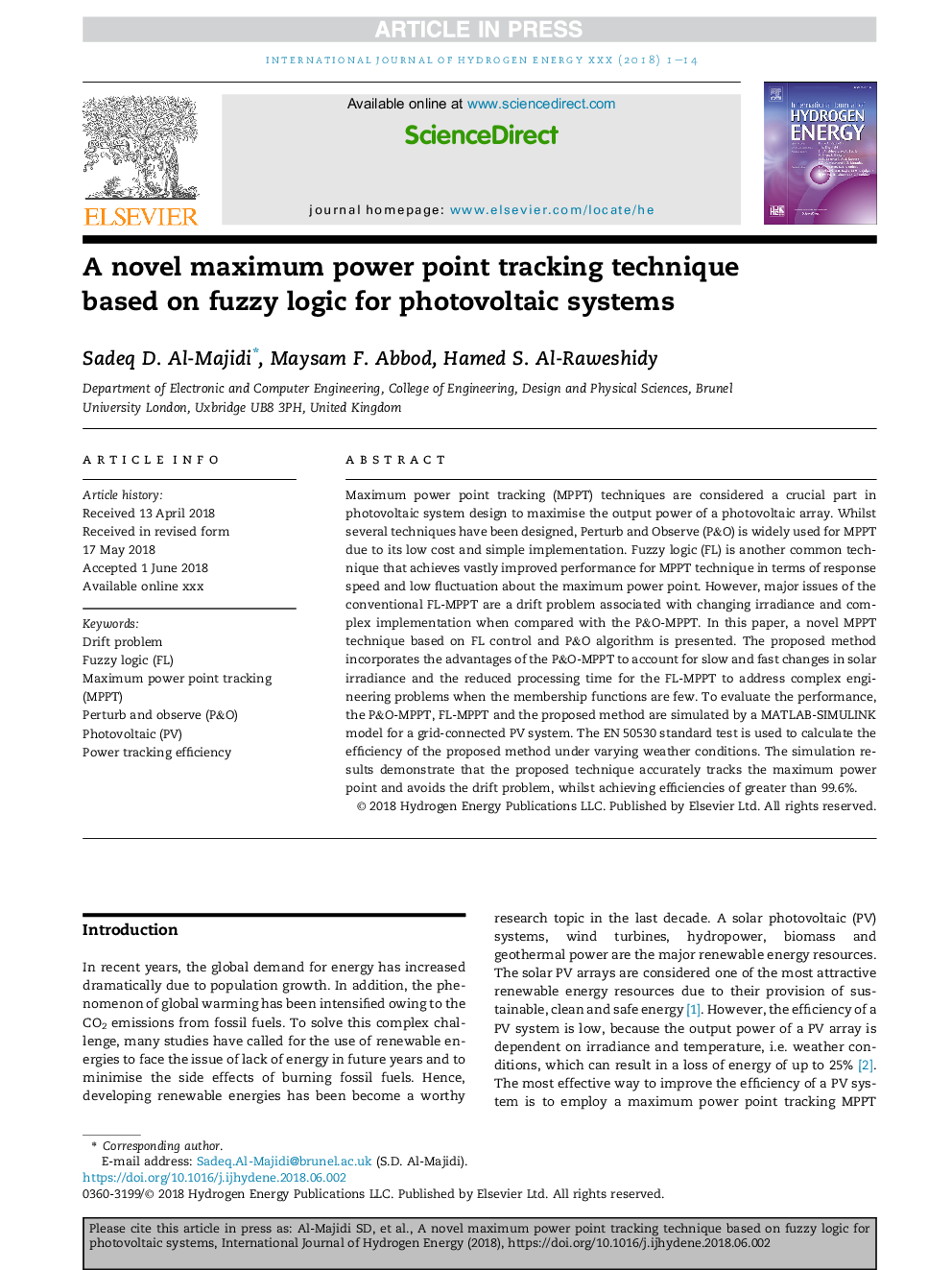| Article ID | Journal | Published Year | Pages | File Type |
|---|---|---|---|---|
| 7705273 | International Journal of Hydrogen Energy | 2018 | 14 Pages |
Abstract
Maximum power point tracking (MPPT) techniques are considered a crucial part in photovoltaic system design to maximise the output power of a photovoltaic array. Whilst several techniques have been designed, Perturb and Observe (P&O) is widely used for MPPT due to its low cost and simple implementation. Fuzzy logic (FL) is another common technique that achieves vastly improved performance for MPPT technique in terms of response speed and low fluctuation about the maximum power point. However, major issues of the conventional FL-MPPT are a drift problem associated with changing irradiance and complex implementation when compared with the P&O-MPPT. In this paper, a novel MPPT technique based on FL control and P&O algorithm is presented. The proposed method incorporates the advantages of the P&O-MPPT to account for slow and fast changes in solar irradiance and the reduced processing time for the FL-MPPT to address complex engineering problems when the membership functions are few. To evaluate the performance, the P&O-MPPT, FL-MPPT and the proposed method are simulated by a MATLAB-SIMULINK model for a grid-connected PV system. The EN 50530 standard test is used to calculate the efficiency of the proposed method under varying weather conditions. The simulation results demonstrate that the proposed technique accurately tracks the maximum power point and avoids the drift problem, whilst achieving efficiencies of greater than 99.6%.
Keywords
Related Topics
Physical Sciences and Engineering
Chemistry
Electrochemistry
Authors
Sadeq D. Al-Majidi, Maysam F. Abbod, Hamed S. Al-Raweshidy,
